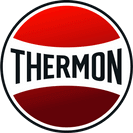At Thermon:
- we care about our employees around the world and the communities in which they work and live
- we commit to reduce the environmental impact of our operations
- we collaborate with our customers in order to help them do the same through our products and innovations
The table below reflects our performance in our fiscal year ended March 31, 2025 (“FY25”) against the Sustainability Accounting Standards Board (“SASB”) Disclosure Topics applicable for Electrical and Electronic Equipment Version 2018-10. For more information, please visit the SASB at www.sasb.org.
SASB Sustainability Disclosure Topics
| Topic | Accounting Metric | Unit of Measure | Code | THR Result in FY25 | THR Result in FY24 | THR Result in FY23 |
| Energy Management | (1) Total Energy Consumed, (2) percentage grid electricity, (3) percentage renewable | Gigajoules (GJ), Percentage (%) | RT-EE-130a.1 | 68,024 GJ consumed, with 100% sourced from grid electricity. This represents a 6% increase in energy consumption versus the previous year. | 64,163 GJ consumed, with 100% sourced from grid electricity. This represents a 4% decrease in energy consumption versus the previous year. | 67,009 GJ consumed, with 100% sourced from grid electricity. This represents a 9% decrease in energy consumption versus the previous year. |
| Hazardous Waste Management | Amount of hazardous waste from manufacturing, percentage recycled | Metric tons (t) Percentage |
RT-EE-150a.1 | 2t hazardous waste; 0% recycled |
45t hazardous waste; 77% recycled |
45t hazardous waste; 77% recycled |
| Hazardous Waste Management | Number and aggregate quantity of reportable spills, quantity recovered | Number, Kilograms (kg) | RT-EE-150a.2 | 0 reported spills in Fiscal 2025 | 0 reported spills in Fiscal 2024 | 0 reported spills in Fiscal 2023 |
| Materials Sourcing | Description of the management of risks associated with the use of critical materials (a material that is both essential in use and subject to the risk of supply restriction) | Discussion and Analysis | RT-EE-440a.1 | *See below | ||
| Business Ethics | Description of policies and practices for prevention of: (1) corruption and bribery and (2) anti-competitive behavior | Discussion and Analysis | RT-EE-510a.1 | Please reference the latest copy of the Thermon Way, our Code of Business Conduct and Ethics, available on our website at the following link: https://ir.thermon.com/corporate-governance |
||
| Business Ethics | Total amount of monetary losses as a result of legal proceedings associated with bribery or corruption | Reporting Currency | RT-EE-510a.2 | $0 | $0 | $0 |
| Business Ethics | Total amount of monetary losses as a result of legal proceedings associated with anticompetitive behavior regulations | Reporting Currency | RT-EE-510a.3 | $0 | $0 | $0 |
| Employee Health and Safety | Total Recordable Incident Rate (TRIR) Near Miss Frequency Rate (NMFR) |
Rate | RT-IG-320a.1 | 0.16 TRIR 23.7% NMFR 0.0 Lost Time Incident Rate Metrics are for the total of employees and contractors |
0.16 TRIR 120% NMFR 0.0 Lost Time Incident Rate Metrics are for the total of employees and contractors |
0.44 TRIR 126% NMFR (4.6% ex COVID related items) 1.0 Lost Time Incident Rate Metrics are for the total of employees and contractors |
| Activity Metrics | ||||||
| Number of units produced by product category (energy generation, energy delivery, lighting and indoor climate control electronics) | Number | RT-EE-000.A | Categories not applicable to Thermon solutions | |||
| Number of Employees | Number | RT-EE-000.B | Approximately 1,568 | Approximately 1,416 | Approximately 1,405 | |
*Materials Sourcing Discussion and Analysis
As part of our manufacturing process, Thermon’s value added manufacturing is dependent upon critical materials sourced from third parties, of which 80% are either off-the-shelf or custom-made products with the other 20% comprised of raw materials. While our manufacturing locations are predominantly in North America, we operate an “in the region, for the region” strategy to diversify our supplier base, manage costs and hold inventory across our various sites. We perform a screening mechanism for conflict materials as part of our supplier management process, and we have a continuous improvement culture that constantly reviews our supplier management processes and adjusts as our operating environment changes. We use limited amounts of magnesium, graphite and platinum in our processes, and these commodities are sourced from multiple suppliers to ensure availability. The quantities we consume of these materials are insignificant compared to the global production and usage.
